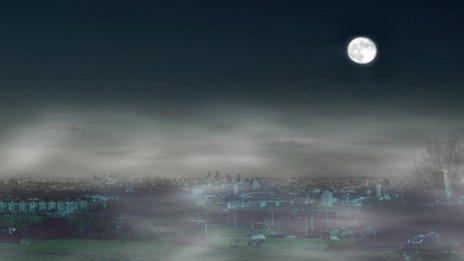Fog causes major disruption to flights at UK airports
- Published
Video inside a plane's cockpit shows what it is like landing in fog
Scores of flights have been cancelled and many more delayed by dense fog across much of the UK.
Heathrow airport said it had cancelled 122 flights on Monday.
London City was closed to all flights for several hours, while other affected airports include Manchester, Glasgow, Belfast, Leeds Bradford and Cardiff.
The Met Office has issued new yellow warnings, external of fog for parts of England and Wales from Monday afternoon through to 12:00 GMT on Tuesday.
The problems in the UK are being compounded by foggy conditions in much of western Europe, with major hubs such as Amsterdam's Schiphol badly affected.
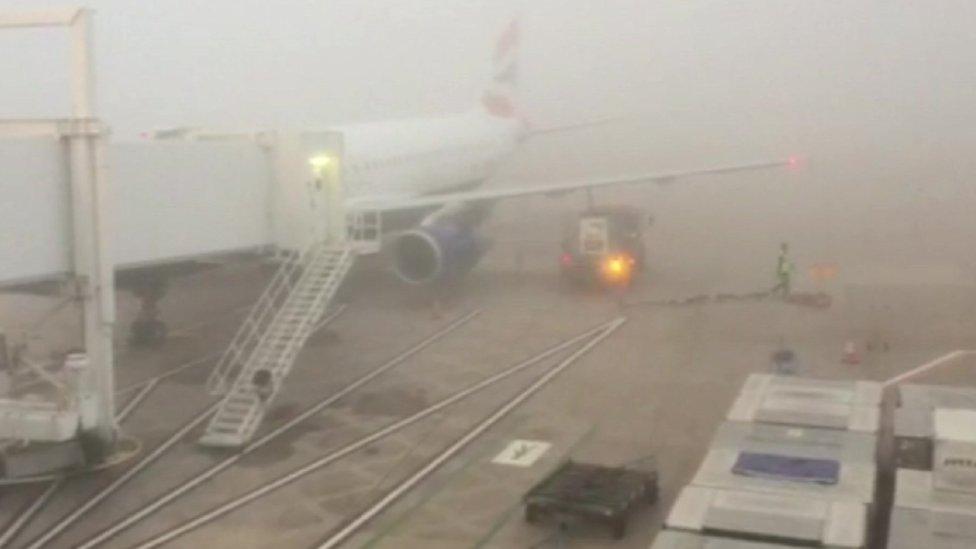
Manchester airport
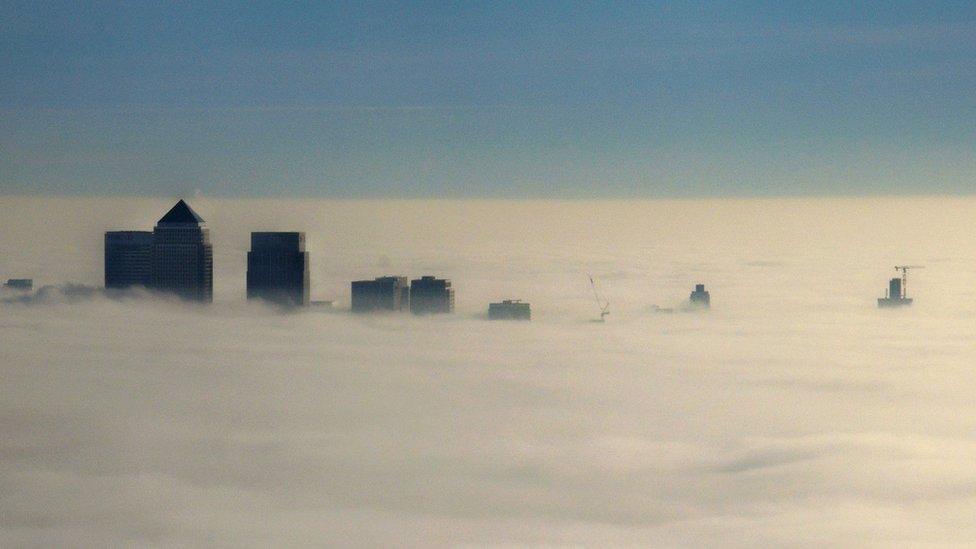
London's Canary Wharf peeping out of thick fog
Visibility fell to just 100m at Leeds Bradford, Manchester and Luton airports on Monday morning, and 150m at Stansted, Heathrow, Gatwick and Doncaster Sheffield, according to the Met Office.
Easyjet said it was suffering "major network disruption", with a large number of aircraft and crew out of place and numerous delays, diversions and cancellations.
The Met Office is warning the fog is likely to build up again, external after dark, becoming especially thick in parts of east and north-east England.
Passengers who were expecting to travel on Monday or Tuesday are advised to check their flight status with the airline.
Among the reported problems:
London City, external began to allow some departures from about 11:30 GMT, but disruption was expected to continue throughout the afternoon
Manchester, external and Southampton, external have both cancelled more than 20 flights, and there have also been cancellations at Gatwick, external, George Best Belfast City, external and Cardiff
Brussels, Frankfurt, Hamburg, Amsterdam and Paris Charles De Gaulle are among the Europeans airports affected
Monday's problems follow disruption on Sunday at some airports, including Heathrow, where about 50 flights were cancelled.
On the roads, a 40mph speed restriction on the Forth Road Bridge led to long tailbacks, external, while Bedfordshire Police said they had dealt with 10 accidents between 06:00 and 10:00 GMT in the thick fog - three on the M1
Ferries across the Mersey were also suspended for several hours, external
Danny Hesford, from Manchester, told the BBC he and 18 friends had been left stranded in Amsterdam.
"We've just heard there are no flights from Schiphol Airport today as the problem has got too big," he said.
"There are rumours of not being able to get another flight back until Wednesday at the earliest."
Louise Baker, from Bridgend, has been stuck in Paris with her family since Sunday night.
She told the BBC: "I have not got enough medication to last me and have no idea what I'm going to do."
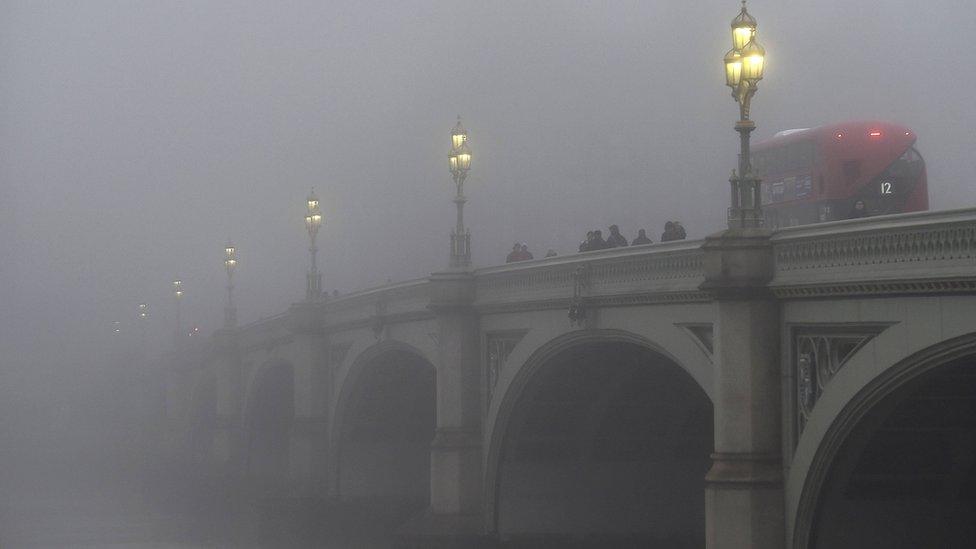
Westminster Bridge
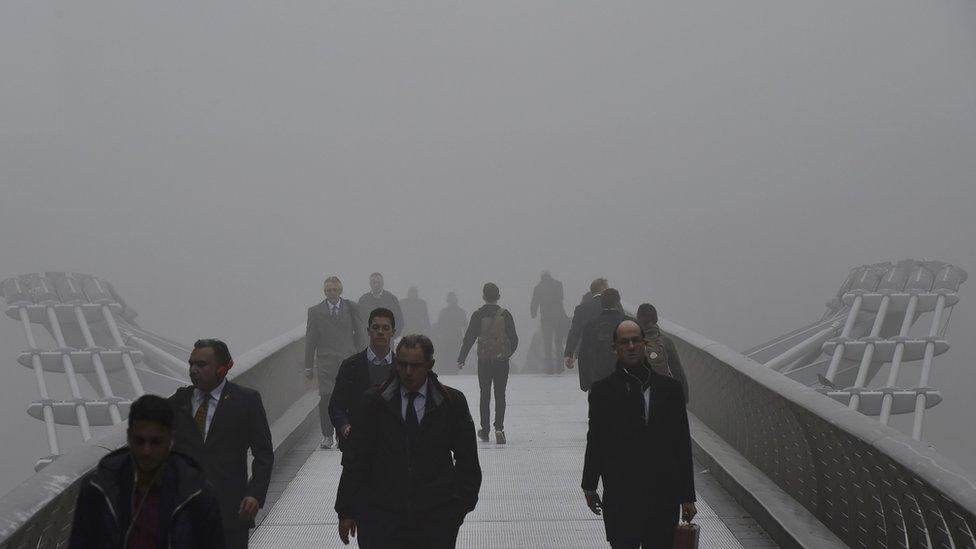
Millennium Bridge over the Thames
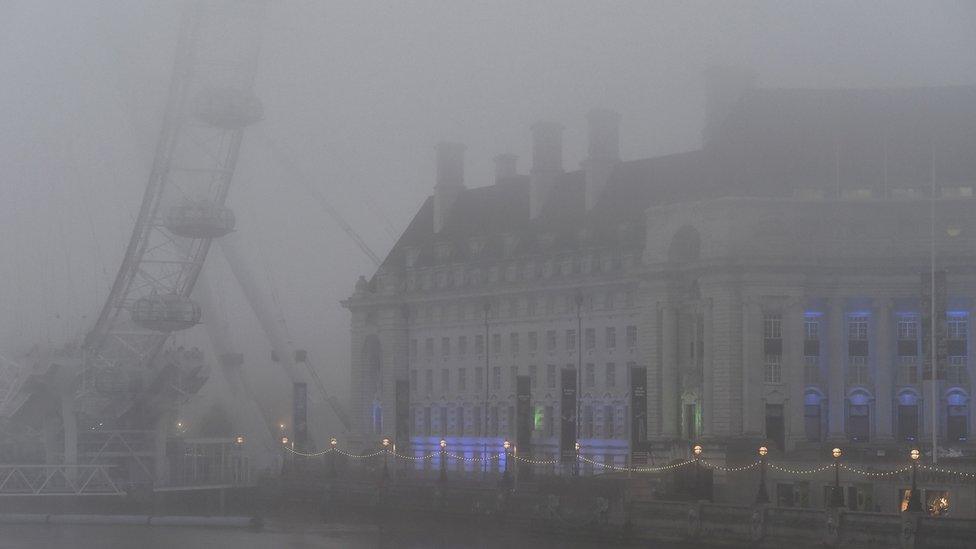
The London Eye
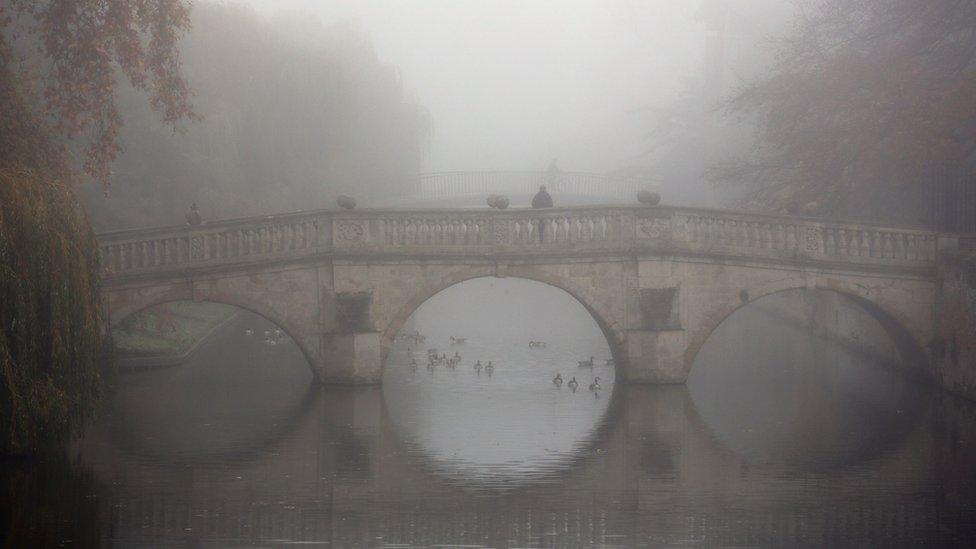
Clare Bridge, Cambridge
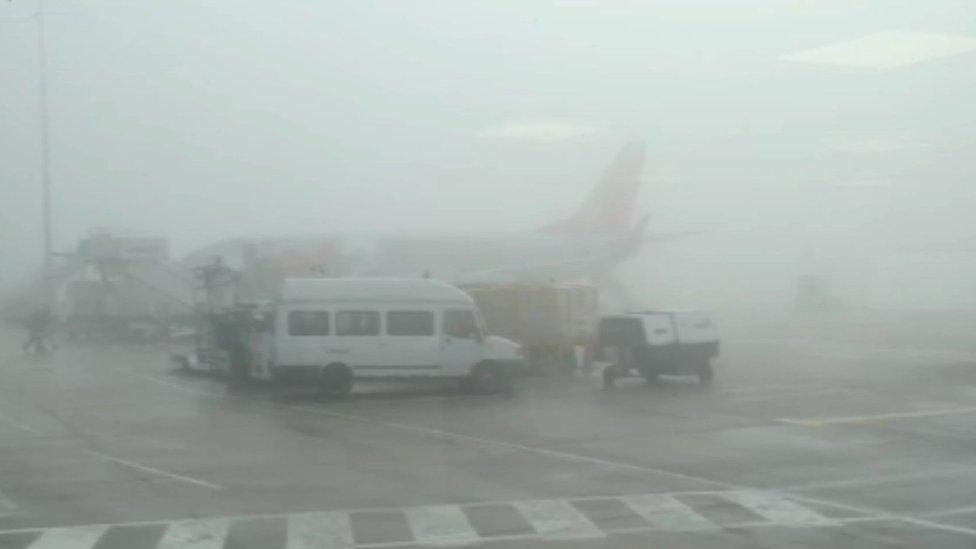
Leeds Bradford airport
On the roads, drivers are being advised to slow down, keep their distance from the vehicle in front and use the correct lights.
On Sunday, a five-year-old girl was found injured in a crashed car alongside her dead father in Crakemarsh, near Uttoxeter, Staffordshire.
A spokesman for West Midlands Ambulance Service said the car appeared to have hit a tree in very foggy conditions, although Staffordshire Police said there was no indication at this stage that fog had played a part in the accident.
Elsewhere, a man died when his car came off the road in thick fog in Barnetby Top, Lincolnshire, on Sunday morning. Humberside Police said the poor visibility had hampered their investigations at the scene.
The Met Office earlier issued a yellow weather warning for England and Wales until 12:00 GMT on Monday
The fog descended as the UK recorded its hottest November day on Sunday with a temperature of 22.4C (72.3F) being reached in mid Wales.

Driving in fog
Motoring organisation the AA advises:
According to the Highway Code,, external you must use headlights when visibility is seriously reduced - generally when you cannot see for more than 100m (328ft), or the length of a football pitch
There's no obligation to use fog lights but if your car is involved in an accident and they weren't on, then your insurer may ask questions
Generally it's better to be safe than sorry, so use fog lights when appropriate, but don't keep switching them on and off - this can be a distraction to other drivers so wait for a consistent improvement in visibility before turning them off
Be able to stop within the distance you can see clearly

Why is it so foggy?
BBC Weather explains how fog forms
By Steve Cleaton, forecaster BBC Weather
The sort of fog we've been experiencing is known as radiation fog.
It tends to form most readily on clear nights with light winds - conditions that are usually associated with high pressure systems, or anticyclones.
Anticyclones initially tend to bring a good deal of settled and dry weather by day, but as the sun goes down in the evening, the air temperature steadily drops and eventually cools to a point where any moisture condenses out into fog - hence why the foggiest conditions are often found towards dawn.
There has also been very little wind to help clear it and as we're into November the sun is lower in the sky, so it's weaker as a heat source, meaning the fog has persisted all day in some areas.
- Published2 November 2015
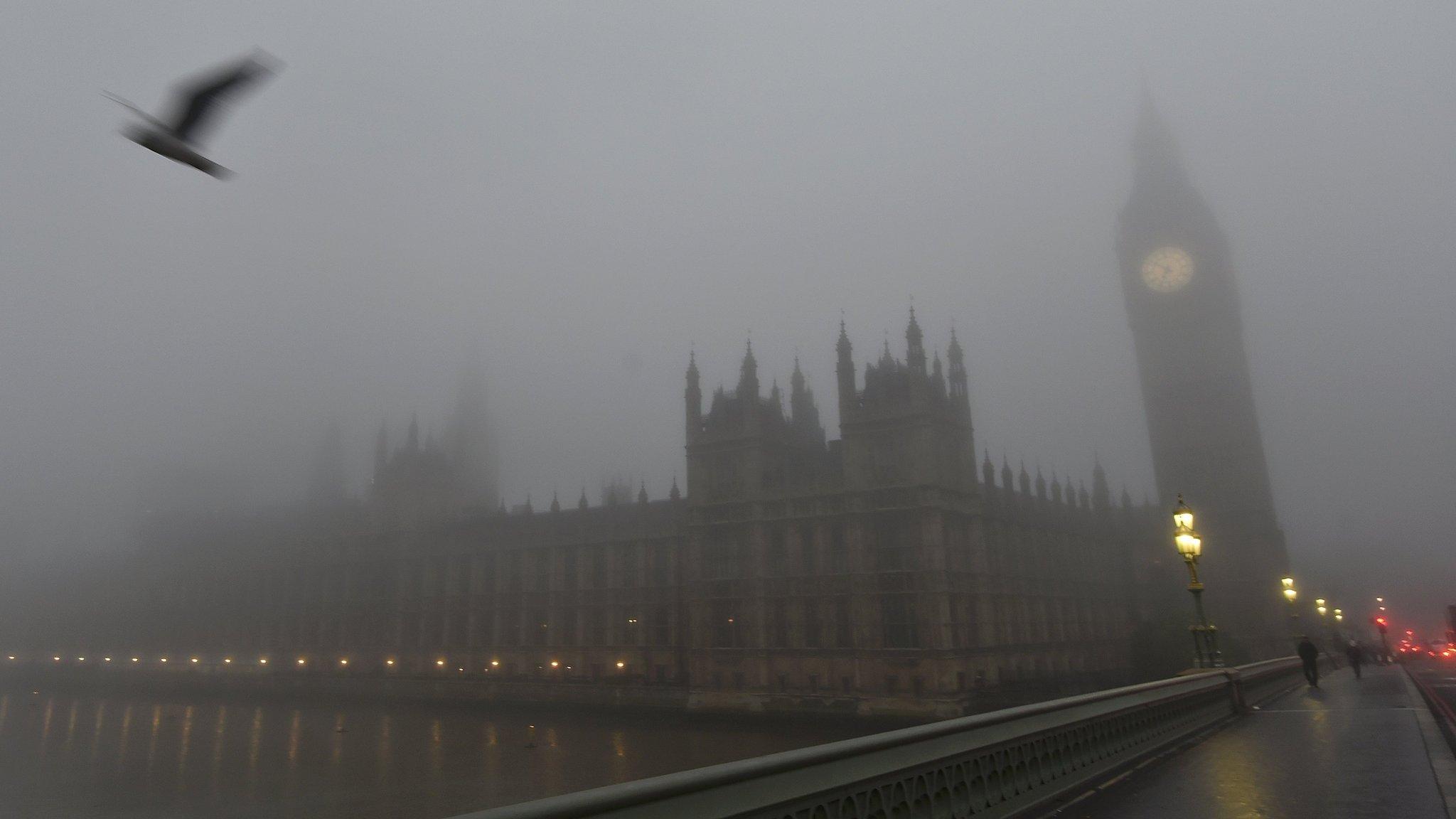
- Published2 November 2015
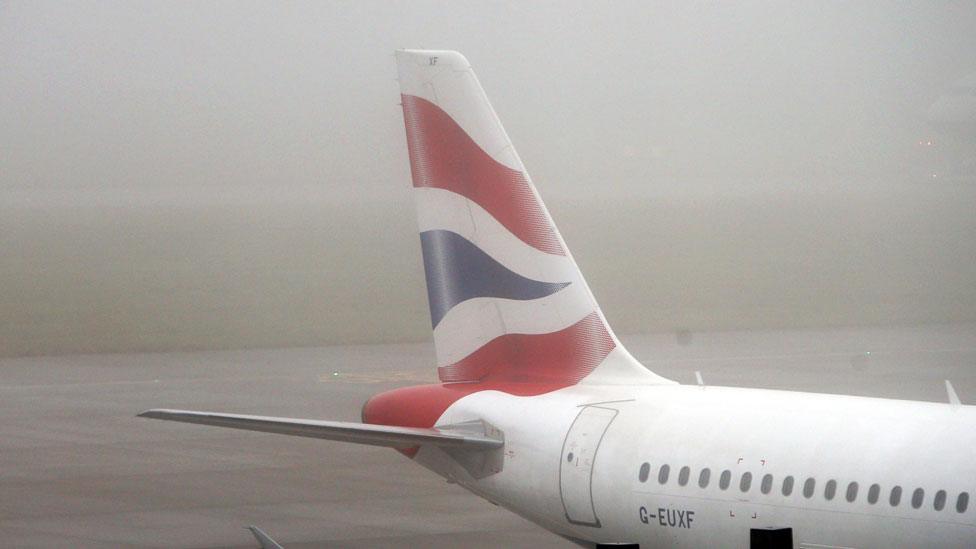
- Published2 November 2015
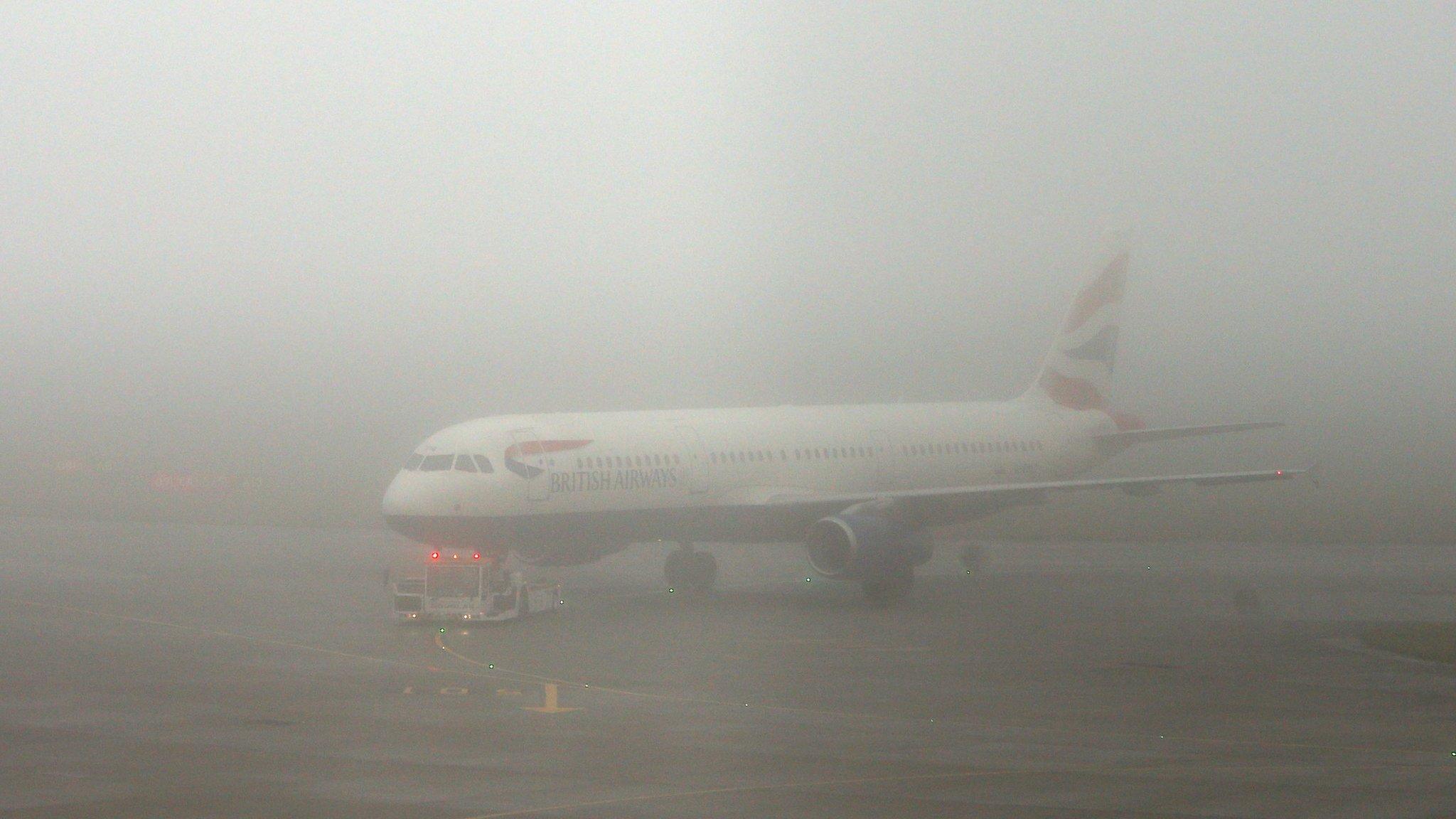
- Published1 November 2015
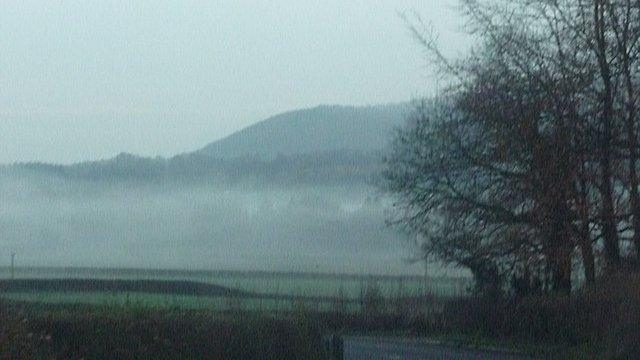
- Published1 November 2015
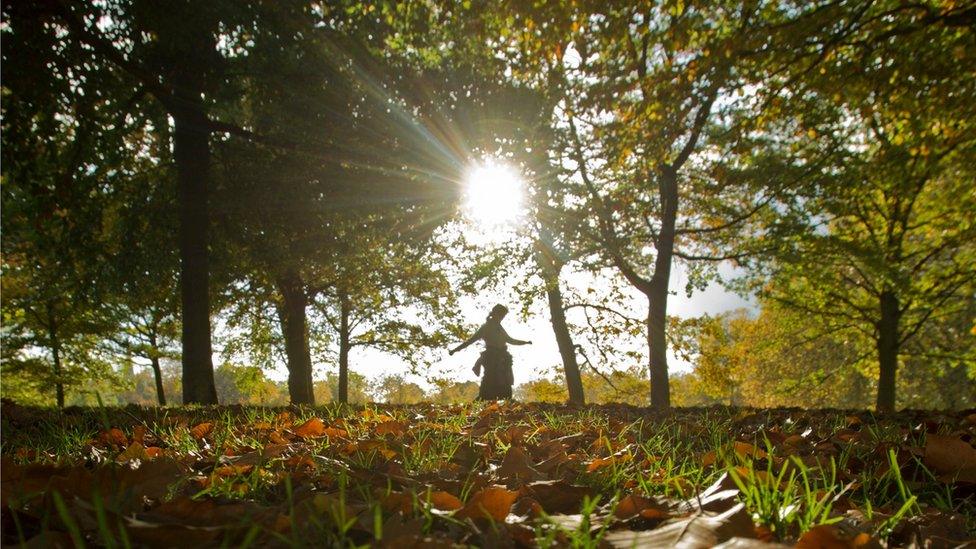
- Attribution
- Published7 October 2013
